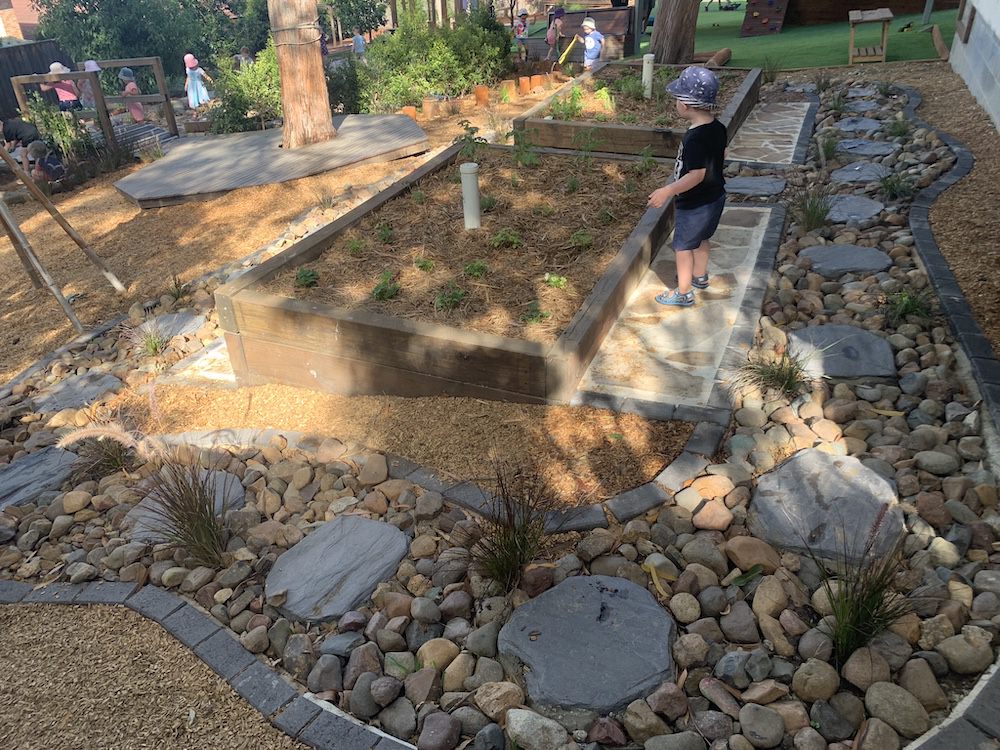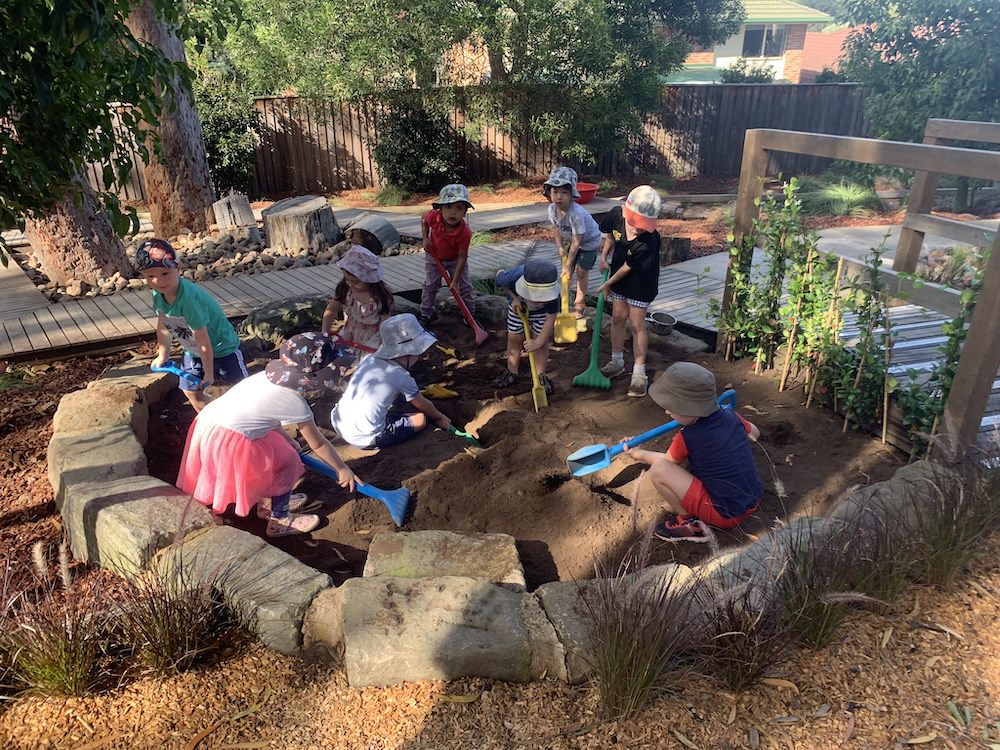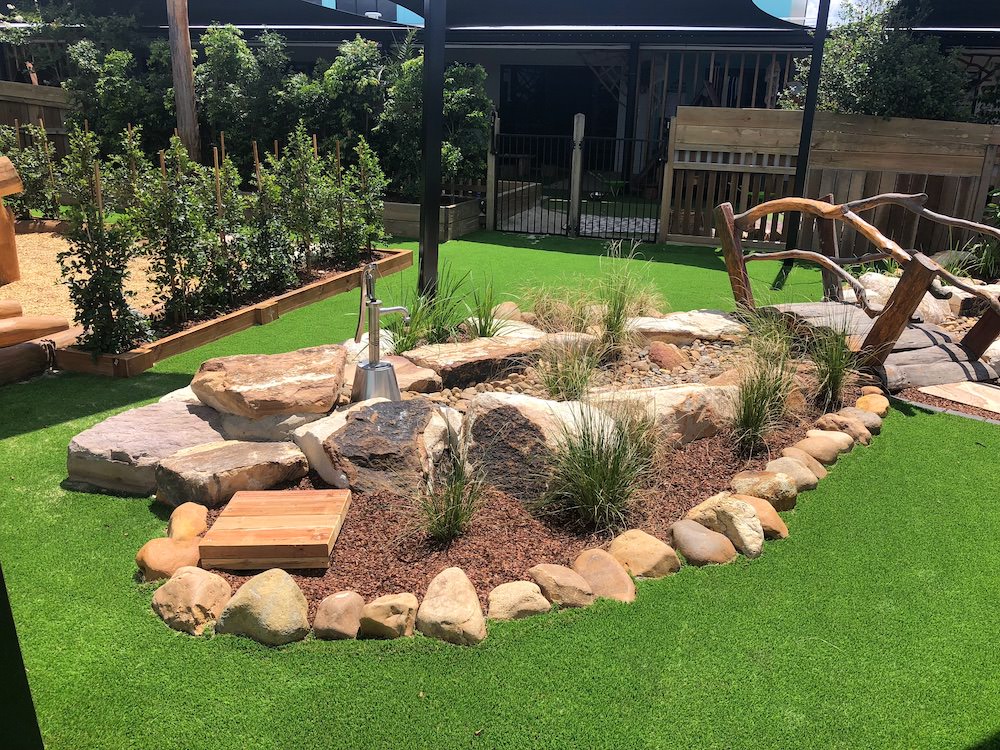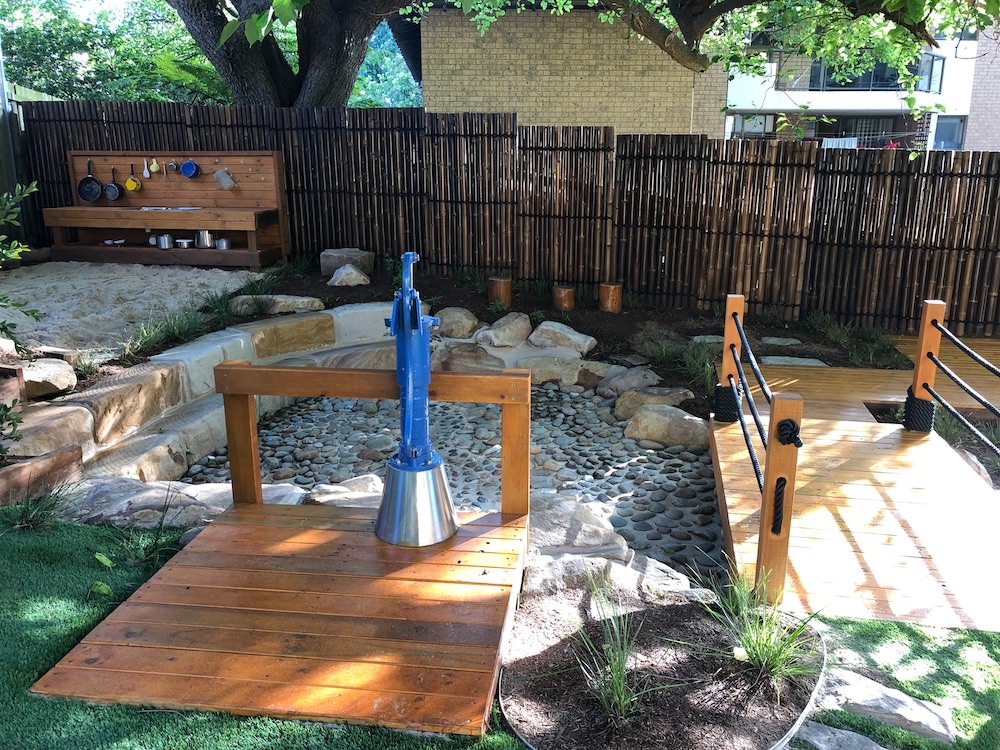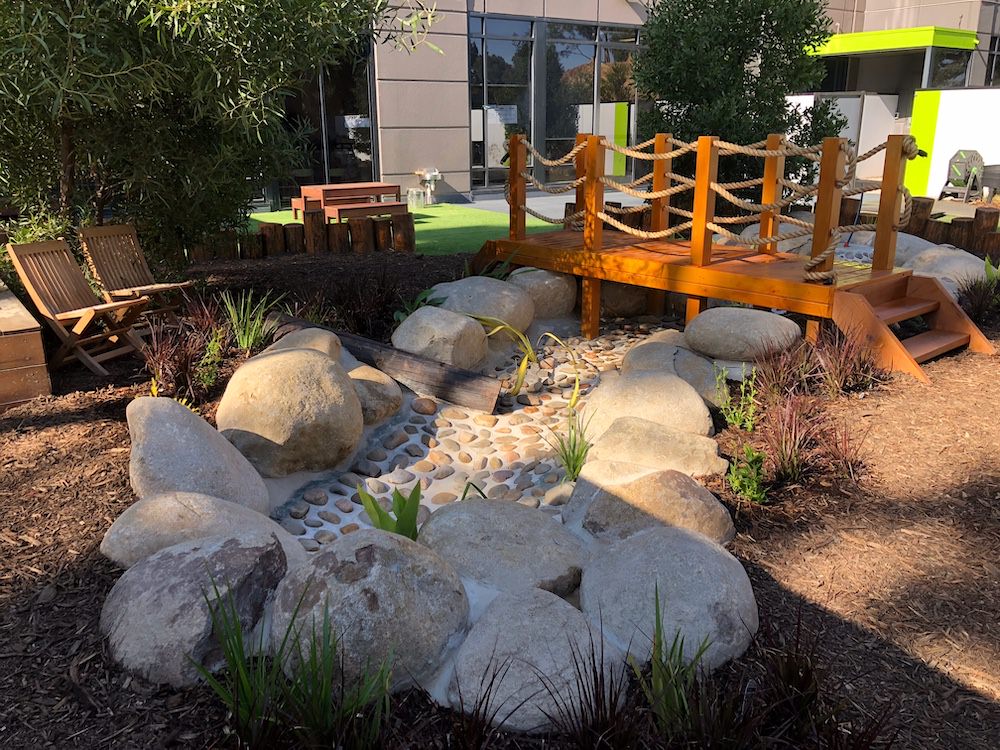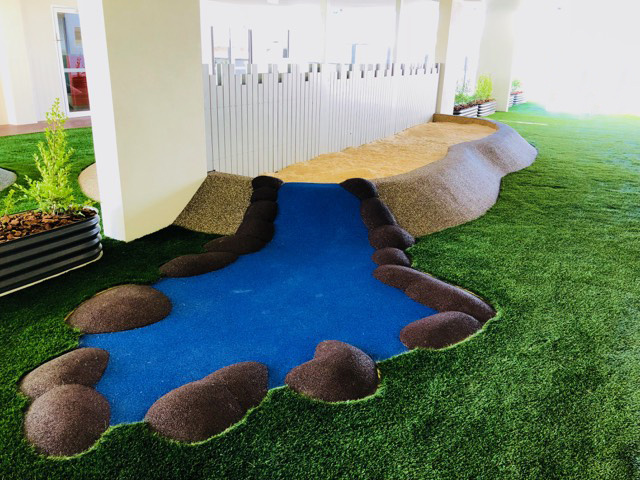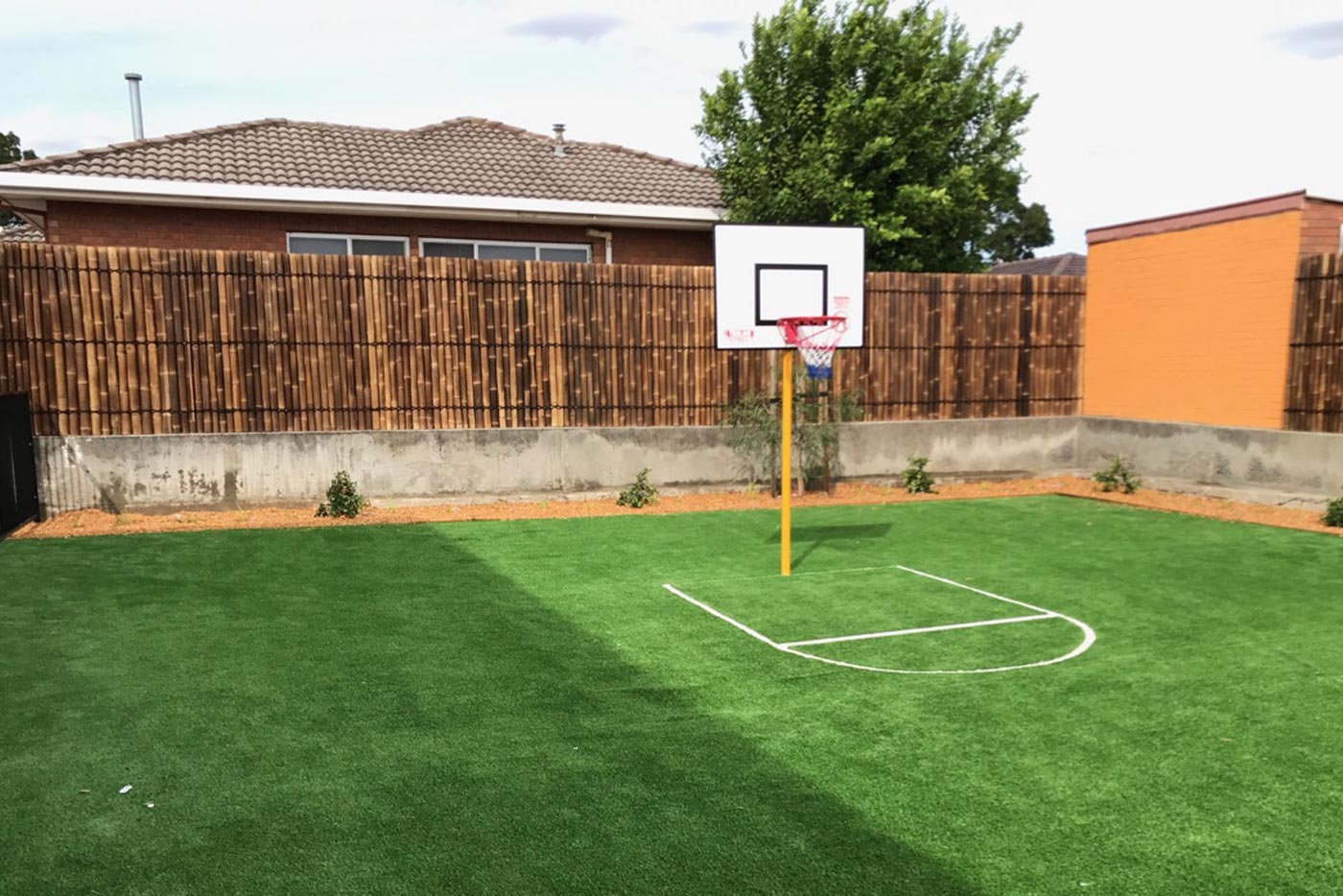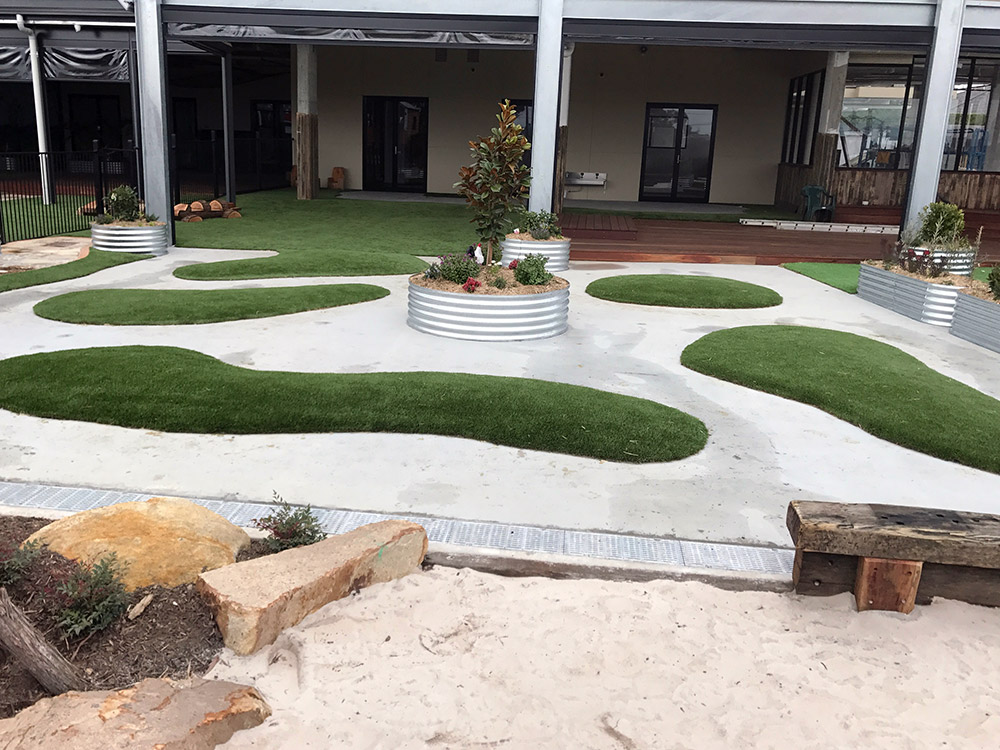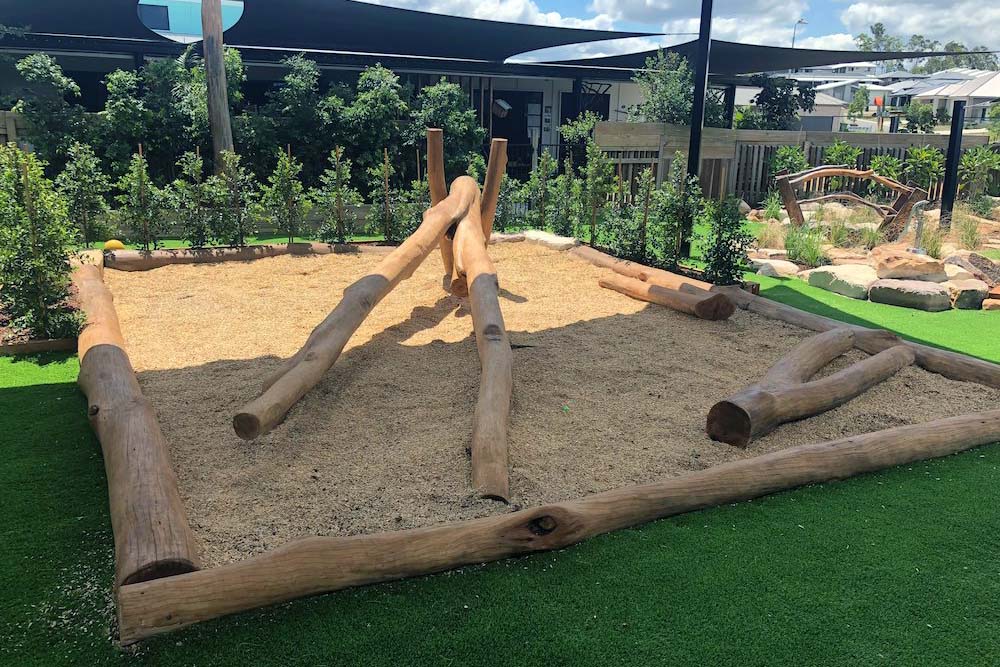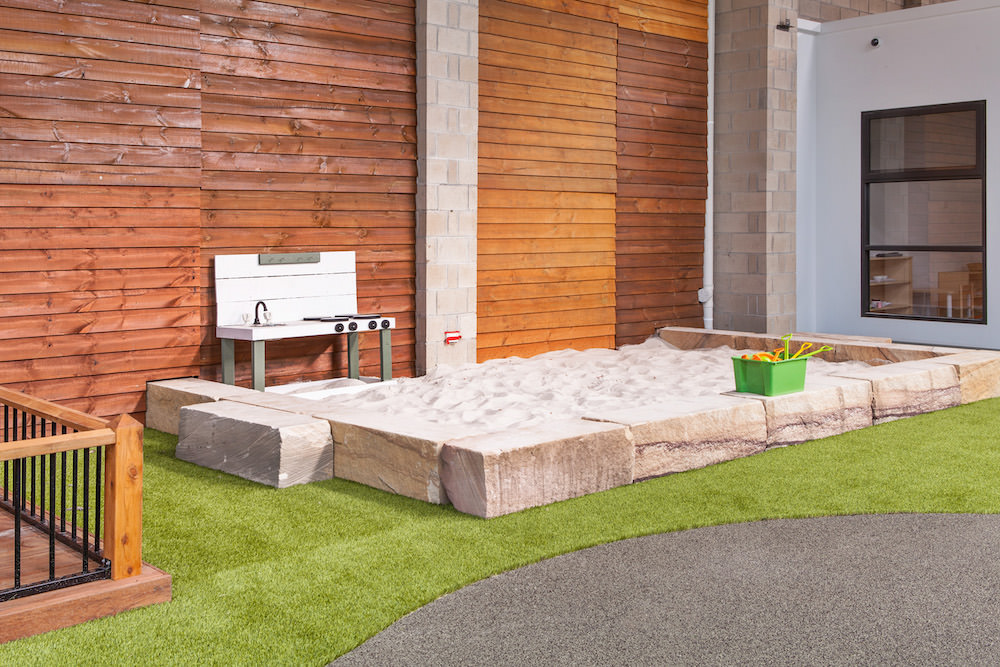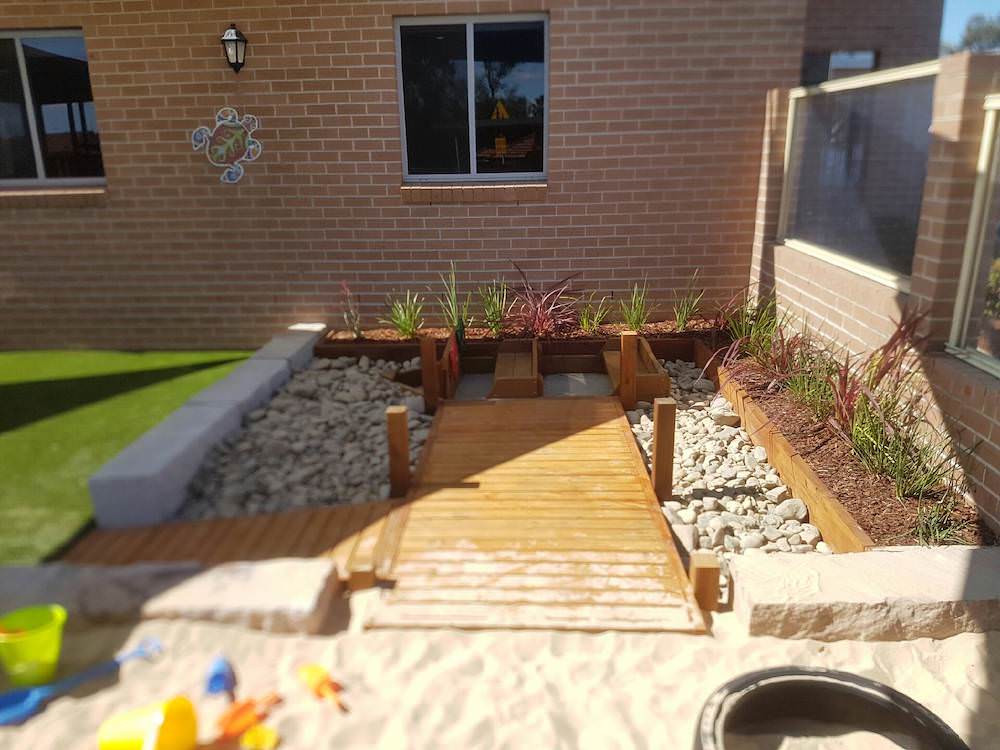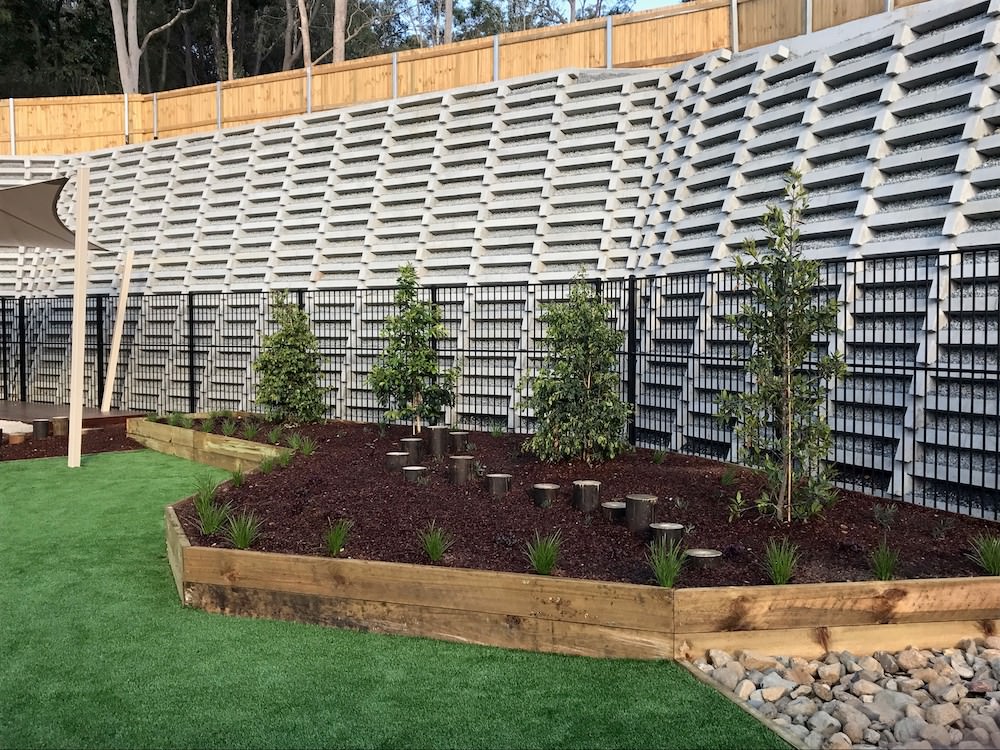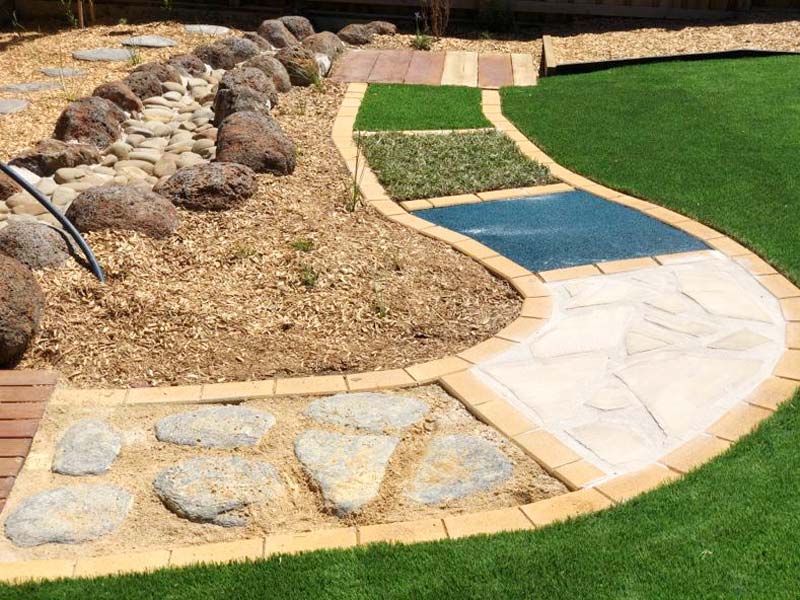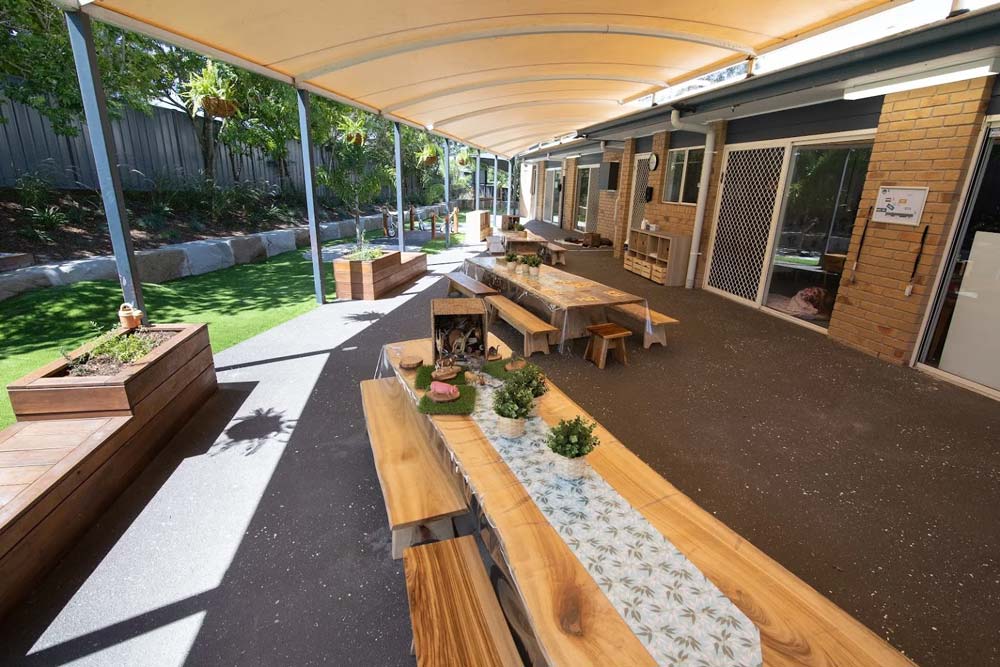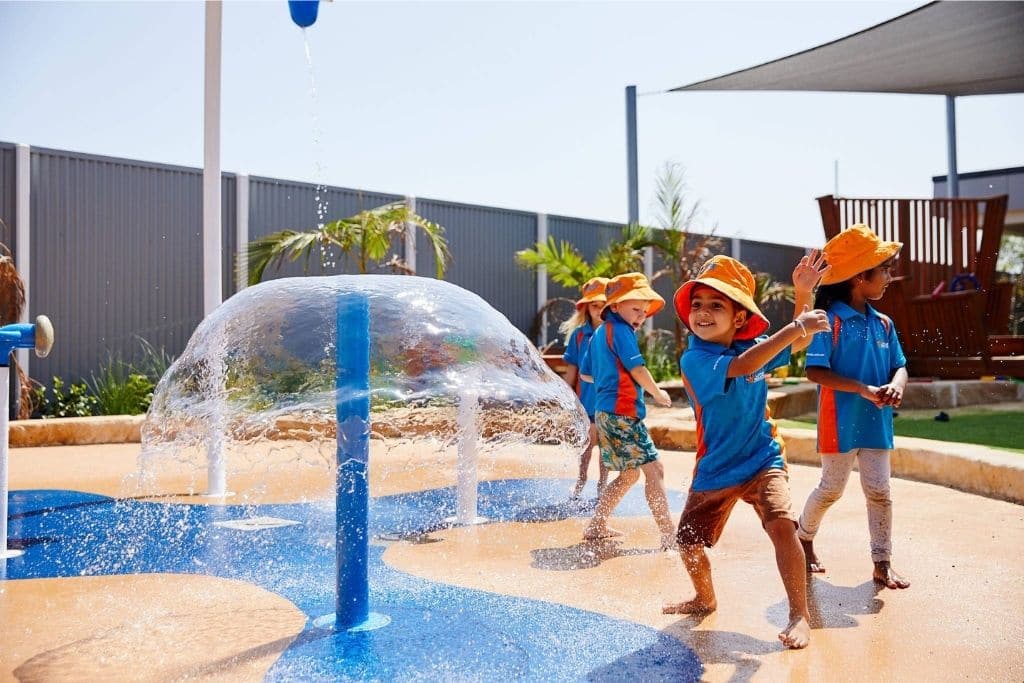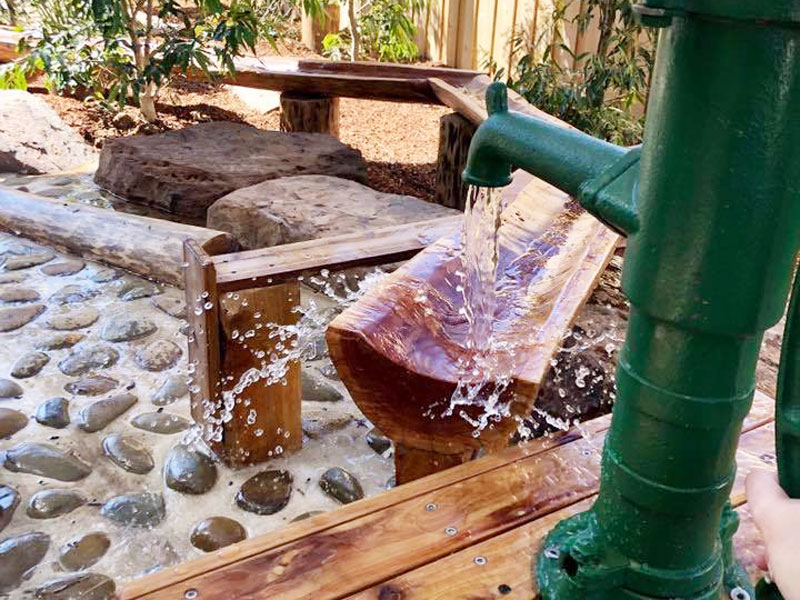Whether your Centre’s play area is indoor or outdoors, Create Playspaces have a huge array of play based landscaping products for your Early Learning Centre, based around the following themes, use one, some or all:
We specialise in finding the right fit for your space, business and children. Take a look at some of our core design components that we use to drive the inspiration for our wider builds. Can’t see what you’re looking for or want something a little more unique? Get in touch with our team for a custom design today.
Playspace Theming
Natural
playspaces allow children of all ages and abilities to be spontaneous, active and creative.
Educational
activities help children make sense of the world around them, engaging in new experiences and environments.
Physical
activities that include crawling, jumping, or running to raise a child’s heart rate and will build confidence and strength and improve coordination.
Creative
activities, so children can create things from personal feelings and experiences, openly and without judgement, can reflect and nurture children’s emotional health.
Sports
activities help develop higher-order cognitive skills, the ability to think critically and assists mental and emotional development.
Playspace Elements
Sensory Areas
It is important to provide opportunities for young children to actively use their senses as they explore their world. This type of sensory play is crucial to brain development, helping build nerve connections in the brain’s pathways. Sensory play allows children to focus on sensory stimulation including, touch, movement, balance, sight, and hearing. Sensory activities allow children to process different information as they learn how to respond to different situations.
Natural Playspaces
When children play in natural environments they are connected to, and contribute to, their world.
Playspaces in natural environments should include plants, trees, edible gardens, sand, rocks, mud, water, and other elements from nature.
Creating play areas in your Centres which include natural elements can have many benefits for children. Research shows that children who spend more time outside tend to be more physically active and less likely to be overweight. Also, children who play in natural settings are more resistant to stress and have a lower incidence of behavioural disorders.
Natural play settings encourage children to play in more diverse, imaginative and creative ways. Playspaces that are natural, irregular, and challenging help young children learn to recognise, assess, and negotiate risk and build confidence.
Natural play spaces invite open-ended interactions, spontaneity, risk-taking, exploration, discovery, and connection with nature. Kids will foster an appreciation of the natural environment and develop environmental awareness, as natural play areas provide a platform for ongoing environmental education.
Rocks & Boulders
The creative placement of rocks and boulders around a play space can provide children with easy to challenging “routes”.
Rocks and boulders can be great for learning climbing skills or just good old-fashioned fun. Children almost always gravitate toward rocks and boulders, and they become the immediate favourite place for children of all ages to explore and interact. In addition to defining areas such as a sand area or dry creek bed; rocks and boulders provide opportunities for challenging and fun play, and add to the natural materials used in play spaces.
Children’s balancing skills are tested when they make their way along a boulder border or use the boulders as stepping stones.
The boulders can also be a good place to sit and rest, talk, or watch. Cleverly arranged rocks and boulders are safe. Children have a healthy respect for the solidity and hardness of rocks and boulders and develop their own sense of care, concern, and safety when they climb on them.
Bike Tracks & Play Courts
Encouraging children to spend more time outdoors and playing together on play tracks and courts will provide countless benefits.
- Social skills: Sporting activities, particularly those involving teams, teach children how to interact with each other and work together as a team to achieve a goal. Children can learn the importance of communication and teamwork.
- How to follow authority: Playing team sports on a court often involves rules given by a educator. Children learn how to follow rules and to respect authority.
- Sportsman behaviour: Getting children to play games that involve rules and an eventual winner teaches children how to both graciously win and lose.
- Physical skills: Getting kids to play outdoors and be active on the courts builds a child’s physical skills. Being active not only builds physical fitness but develops hand-eye coordination and fine- and gross-motor skills.
- Friendship: Playing sports with others is a bonding experience. Children on sports teams make new friends and share a common goal which they work toward together.
- Self-confidence: Sports allows children to feel successful as a team member and build confidence.
- Develop healthy habits: Sport forms a healthy habit of physical activity to see them right through to adulthood and help them ward off many age- and weight-related ailments.
- Improved mental health: Taking part can greatly improve a child’s sense of self-worth. Whether it is the satisfaction of mastering a dribble or beating a personal best, sports-related exercise enables children to gain confidence in their skills.
Tunnels & Mounds
Mounds made from soil or wet-pour rubber give a three-dimensional aspect to an area that may be otherwise flat, children can use their imagination to feel as though they are the king or queen of the castle and view the world from a different level.
Mounds can be crawled over safely by babies, can be used to “hide” behind, for sitting or lying on, and can have a wide variety of play items added to them.
You can also insert or mount other items on our ‘through’ mounds. This can include slides which are installed on the mound, giving added safety as a fall by a child would be from a reduced height. Mounds can also be landscaped with plants suitable to your area, including small shade trees, shrubs, and native grasses.
Sandpits
Sandpits are the perfect accessory for your Early Learning Centre. Sandpits are a great way to encourage children to develop their imaginations. Because playing in the sand is open-ended, young ones can not only play with toys in the sandpit but can also create anything they can imagine – whether that’s buildings, castles, or towns. A child playing in a sandpit will get the opportunity to interact with other children. Together, they can discuss what to build, what area of the sandpit to play in, and use their problem-solving skills to answer questions they want to explore. Playing together in a safe and monitored space is a great way for young children to develop these important social skills.
While playing in a sandpit, children will often undertake tasks such as digging and scooping, as well as running, squatting and kneeling. This all helps to develop physical skills such as hand-eye coordination and muscle control.
As young children play and explore in the sand, they learn and internalize many new concepts about the world around them, including ideas from maths, science, and ecology and they are out fresh air and exploring their natural world.
Garden Beds, Planter Boxes & Veggie Gardens
Gardening engages all the senses, making it ideal for young children. Gardening also encourages healthy eating as they become involved and invested in growing the food they eat. Scooping up dirt, planting seeds, and pouring water all take fine motor control and strength. These important motor skills help children with their academic skills such as writing, cutting, and typing.
Gardening also introduces children to scientific concepts from many areas, like botany, biology and earth science.
Without even realising it, kids are learning the basic steps of the scientific process while gardening. Gardening is also a great way to teach kids about responsibility. Kids learn that they have to take care of their seeds each day in order for them to become healthy plants.
Gardens will make your play area look more aesthetically pleasing, not just for children, but adults too. The introduction of beds and boxes add colour and depth to your play area, enhancing its appearance.
Paths, Walkways, Bridges & Creek Beds
A path or creek bed can turn a bland or boring area into one of imagination and adventure for young children. These natural elements encourage imaginative play for children, add depth to your outdoor space, and create defined areas in which to encourage different types of play. A dry creek bed can bring fun, natural elements to your play area, and create a space for children to explore, create, and interact.
Create Childcare Playscapes specialise in the installation of creek beds.
We can install a creek bed to be either dry or wet, so you can enjoy the look of a creek without having to worry about installing and maintaining water if that’s your preference.
Paths are another way to add natural elements and define spaces within your outdoor play area. Paths are also wonderful for helping navigate people around the outdoor area you have created. We have many designs to suit your needs, and we carefully incorporate natural elements to enhance the look of existing areas as well. Paths also enhance outdoor playscapes by encouraging imaginative play.
Seating Areas & Outdoor Classrooms
Whether it is raining or sunny, outdoor seating areas have all-round benefits. Apart from a place to meet, sit, relax, chat, eat or read, they are great to use as an outdoor classroom, extending your learning spaces and providing the opportunity for more hands-on learning.
Studies have shown that many children have increased concentration and are more motivated, inspired and willing to learn when they are outdoors.
Splash/Water play
Splash pads are quickly becoming popular recreation additions within ELC’s, especially in the warmer climates of Australia. They offer a fun water experience while requiring a relatively small financial investment. They are scalable, allowing them to meet wide-ranging levels of service and budget. The jets and sprays offer an endless combination of choreographed movements, intensity, and sizes of water.
Splash pads offer encourage interaction. Children can play impromptu games and anxiously stand together in anticipation. The versatility of splash pads with their multiple spray zones appeal to all age groups. Additionally, well-designed splash pads offer universal accessibility for all types of physical abilities.
Things to Consider
Ground Surfacing
When providing a safe environment for your children to play in, the surface on which they play is particularly important.
We all know that from time to time children will accidentally fall from even the safest piece of equipment when playing. The purpose of safer playground surfacing is to cushion the impact of a child’s accidental fall and reduce the severity of an injury.
Create Playspaces offer surfacing which not only provides a safe platform for equipment, but also looks visually attractive. The surfacing we provide includes artificial grass, soft-fall/wet-pour rubber and loose fill mulch.
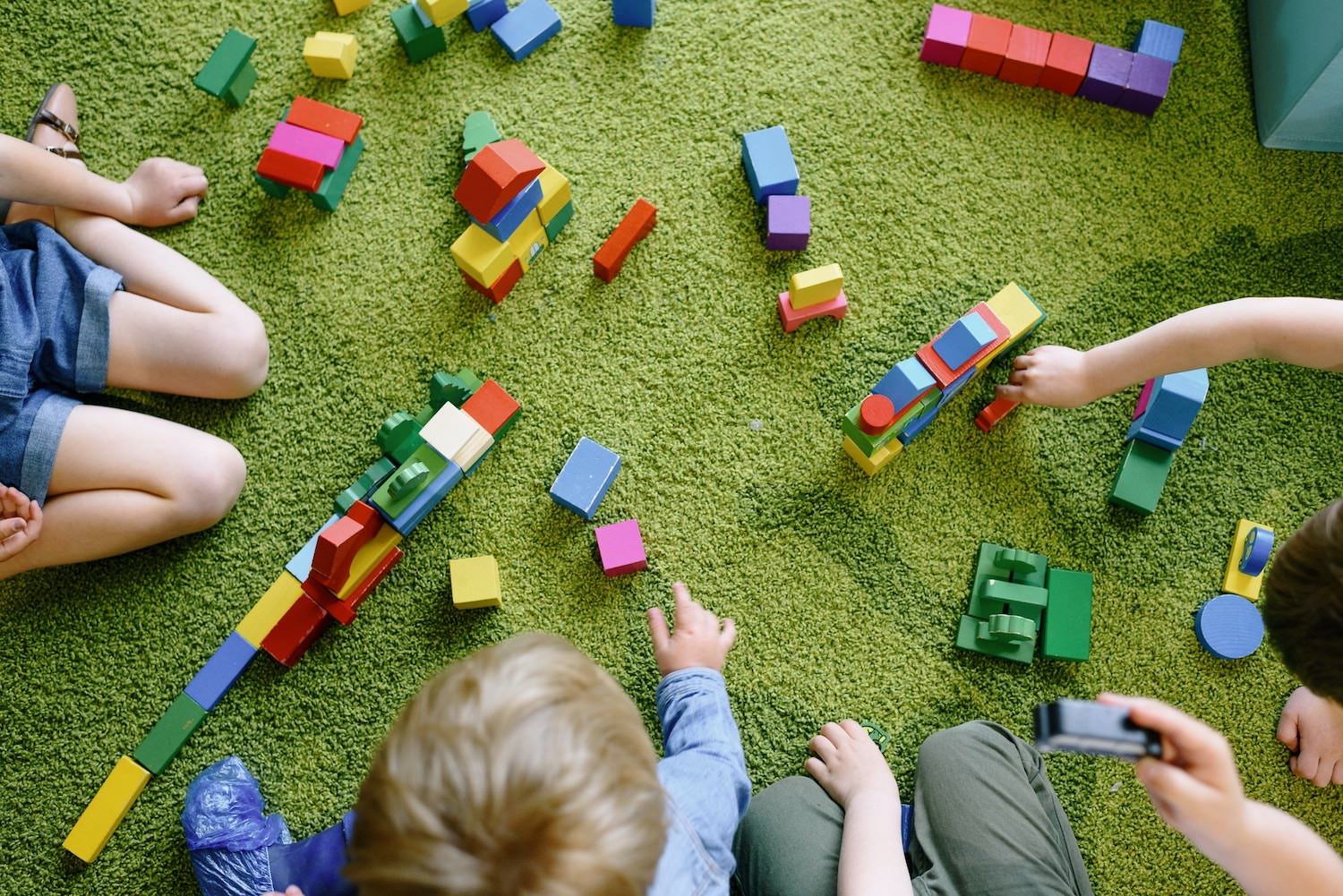

Sun Shade Sails
The most important reason to provide playground shade structures is to help provide some form of protection against UV rays. In addition to sun protection, shade structures are also important because they provide relief from the heat, important for children playing outside on hot days, but they also reduce the potential for severe burns from exposed hot surfaces.
Custom made to suit your play areas, our shade sails are made from a breathable fabric that allows fresh air to circulate beneath providing a comfortable, cool and well-ventilated space ideal for hot summer days. The fabric has UV inhibitors that prevent harmful rays from penetrating the fabric, offering up to 98% protection.
Although not rainproof, the do provide limited shelter from a light drizzle, so will not protect items sensitive to water.
